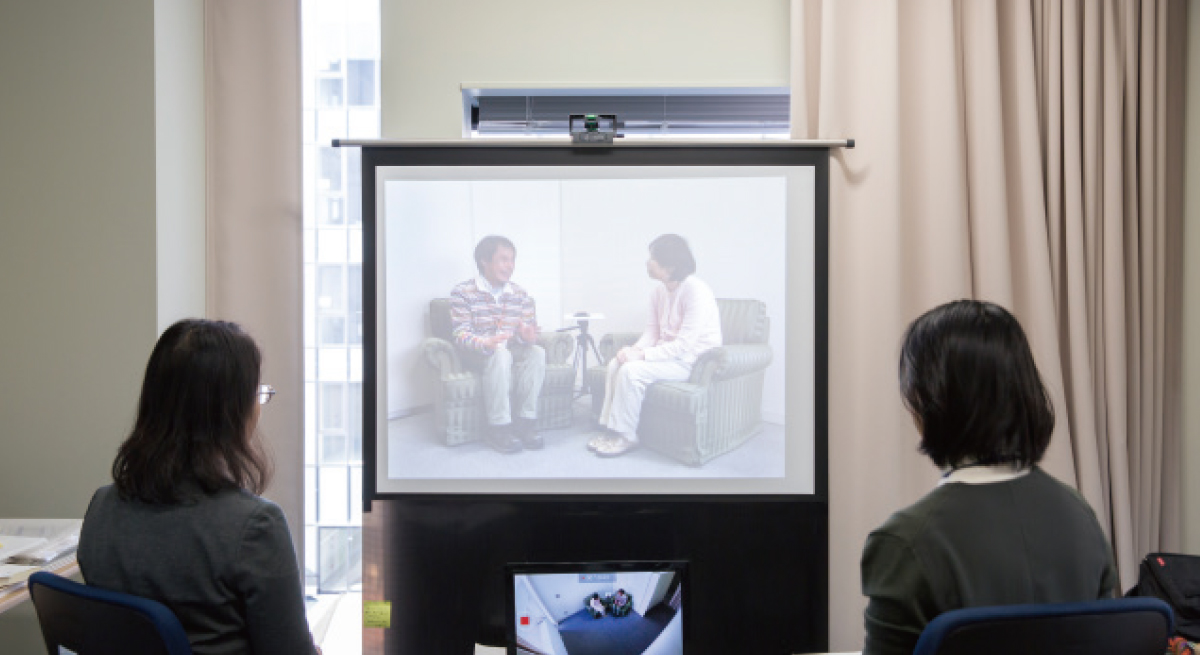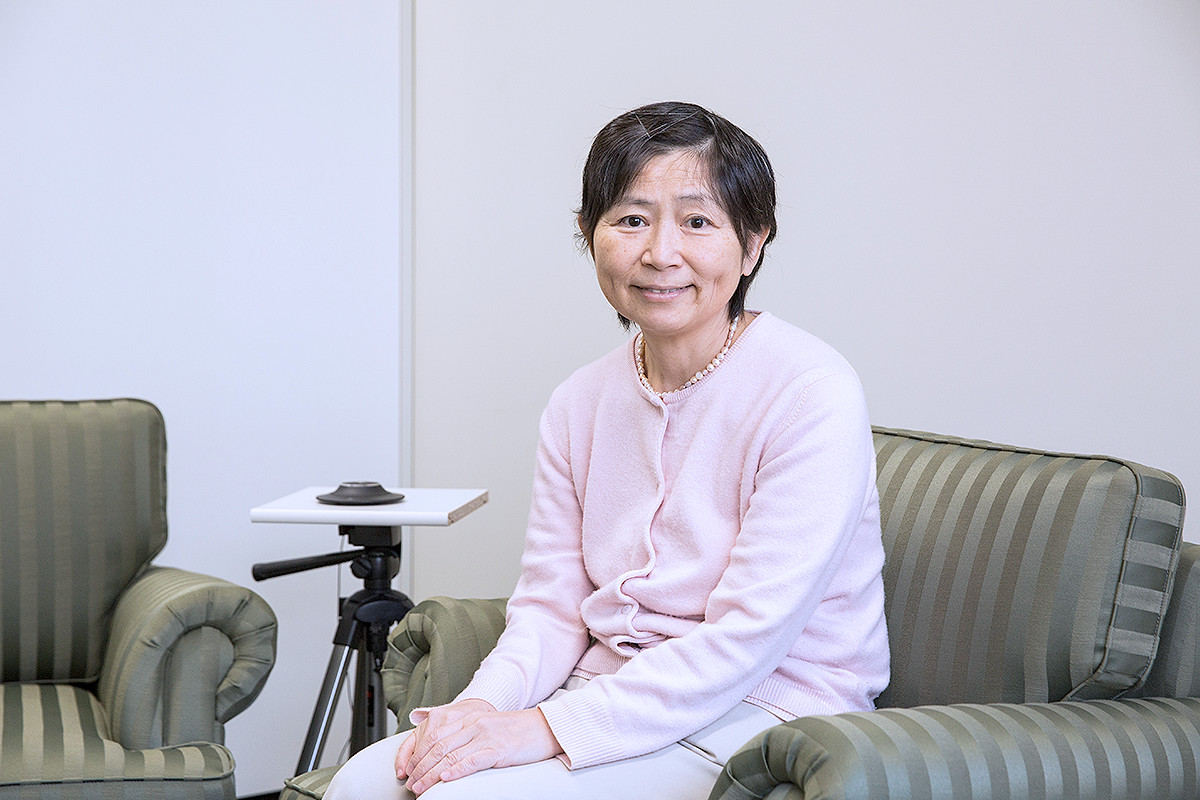STORY #1
How to obtain accurate Testimonials from Children?
The evolving Practice of forensic Interviews
Makiko Naka
Professor, College of Comprehensive Psychology
Drawing out accurate information from interviews that support children, who are still undergoing development in their abilities to retrieve memories and communicate
Obtaining accurate information from children who may be witnesses to a crime or an accident, or are victims themselves, is not easy. Their memory capacity and their language capabilities to convey accurately what they remember are yet to be fully developed. Adults who disregard these facts tend to ask repeatedly leading and suggestive questions, such as “did someone hit you?” and “did you see a white car?” This way of questioning contaminates the child’s memory and reduces the credibility of his or her testimony.
Considering these issues, as a developmental psychology researcher, Makiko Naka studies forensic interview techniques that draw out as much accurate information from children while not mentally burdening them.
“It is the ability to communicate, besides having the basic capacity to retain memory, that makes the difference in properly reporting what one had experienced,” Naka began to explain. Initially, a toddler may only have the ability to describe a memory of a car in an associative manner, such as by mimicking related sounds. However, as they grow in their cognitive abilities and accumulate experience in talking with adults, they learn to speak in specifics, saying things such as, “the other day, I was in Daddy’s car, and…” Naka clarified, “it is not merely about finding out whether they remember something. The most important is to have them talk at length about it.” Naka is developing methods of and training programs on forensic interviews, based on findings from basic research on developmental and cognitive psychology.
According to Naka, forensic interviewing was developed in the West during the 1980s and the 1990s. It was adopted by the police and welfare organizations, and, eventually, many interview techniques were devised. Specifically, the National Institute of Child Health and Human Development (NICHD) protocol developed by Professor M. E. Lamb and his colleagues piqued Naka’s interest. It was developed in the U.S. and has been widely used across North America and Europe, as well as in Israel and Asian countries such as Korea. Naka translated this protocol into Japanese, organized its critical items, and worked on devising a forensic interview method that is appropriate for the Japanese context.
Based on the consideration that children can be influenced easily by leading questions and suggestions, and that they are vulnerable to emotional stress, “There are four main features in this interview method,” Naka says. First, (1) we must emphasize open-ended questions, with no limitations or restrictions on their answers, and free narratives, allowing the child to use his or her own words. (2) The interview must be flexibly structured for maximum effect. (3) Document the interview by video recordings, to retain accurate information. Finally, (4) minimize the number of interviews to avoid memory changes and secondary damages due to emotional distress, by working with an interdisciplinary team of professionals.”
The actual forensic interview follows a structured format with the following stages: pre-substantive phase, the substantive phase (free narratives), questions if necessary, and the closing. In the pre-substantive phase, the interviewer will explain the “ground rules” by describing the rules and instructions of the interview. Then, the interviewer will engage in a rapport-building conversation so that a more relaxing one can take place. After having the child practice recalling and discussing an event that took place in his or her everyday lives, the conversation will proceed to the substantive topic. “The ironclad rule of this type of interview is to keep it open-ended. You may ask the child, ‘tell me everything that happened from the beginning to the end.’ Then, you will let the child speak at his or her own pace, only following up with more open-ended questions, such as ‘and then?’ or ‘and then what happened?’, as you gather information.”

The interview is monitored by a behind-the-scenes staff, checking the content of the questions and providing advice as needed.
Moreover, inter-institutional collaboration has gained importance as forensic interviews are being implemented. In Japan, when children claim to have been victimized, they will, first, be interviewed in a Child Guidance Center. If any criminality is suspected, it is common for the police to interview the child, followed by interviews by the prosecutors. “At worst, they may be interviewed over ten times. Aside from the danger that their memory could deteriorate or change during that time, they may also even experience secondary trauma due to recalling their memory each time they are interviewed. The purpose of an inter-institutional collaboration is to reduce the number of hearings,” Naka explained.
Previously, there was no system in Japan under which the police and the prosecutors or the welfare and medical institutions can collaborate. As each institution had different questioning procedures and information that they would like to obtain, initially, an interdisciplinary collaboration was considered difficult to organize. Under these circumstances, in October 2015, a notice was issued by each of the institutions, namely, Ministry of Labor, Health and Welfare, National Police Agency, and Supreme Public Prosecutors Office, to encourage an inter-institutional collaborative fact-finding process. Since then, there has been a surge of interest and gradual progress in forensic interviews.
Naka and her team have developed training programs to spread the knowledge and skills relating to forensic interviews and promote interdisciplinary collaboration for those involved in forensic interviews. They have also provided training to those working in Child Guidance Centers, the police, the prosecutors, staff of medical facilities, and specialists in welfare institutions. Through training, Naka intends “to understand the thinking and positions of other institutions and specialists to achieve a smooth collaboration in the forensic interview process.”
Forensic interview methods are currently used in not only welfare and legal settings but also medical institutions and schools. These methods, which consider the interests of victims, must be useful in dealing with not only children but also adults. Further development and dissemination of interview methods and training programs would certainly benefit society.

- Makiko Naka
- Professor, College of Comprehensive Psychology
- Research Subject: development and provision of a training program to foster the use of forensic interviews by a multidisciplinary team, development of a forensic interview method and a training program to protect children against crimes and on conversation between adults and children
- Research Keywords: experimental psychology, jurisprudence on new territories

































